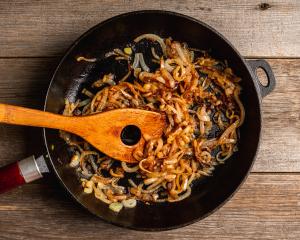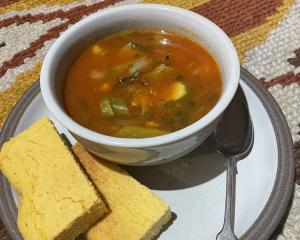You may notice a number of ''light'' wines appearing on shelves and in cafes.
These lower-alcohol wines have about 9% as opposed to the usual 13%-14.5% alcohol and because of this are said to have fewer calories.
There's a fast-growing market, not only in New Zealand but also overseas, especially Sweden, says Neil Ibbotson, of award-winning Saint Clair Estate, whose Vicar's Choice Sauvignon Light Bright 2013 is one of the new breed.
The New Zealand wine industry aims to make New Zealand the world's leading producer of high-quality lower-calorie and lower-alcohol ''lifestyle'' wines with its recent announcement of a research and development project between the wine industry and the Ministry for Primary Industries.
Alcohol in wine is generally determined by the amount of sugar in the grapes and there has been a trend over the past couple of decades to leave grapes on the vine to develop riper flavours and hence more sugar.
As a result, the alcohol levels have crept up from about 12-12.5% 20 years ago to the current 13-14.5%.
This is not necessarily a bad thing as far as wine quality goes.
After all, many of us like well-flavoured wine with ripe fruit.
However, some wines, particularly pinot gris, can be unbalanced by excessive alcohol, which leaves a burn in the mouth on the finish, rather like neat spirits do.
Some wines can carry 14% alcohol without the burn, because they are better balanced, but you certainly don't want to drink more than a glass at lunch and drivers need to be very careful if they are going to have a glass with a meal.
Some styles of wine, such as some rieslings, are made in a naturally low-alcohol style, usually with residual sugar balancing a crisp acidity.
Until recently, however, other low-alcohol or ''de-alcoholised'' wines were stripped of the alcohol by spinning cone and other technological processes, which also stripped the flavour from the wine, or by dilution with water.
It's no wonder they didn't take off. I'd certainly rather drink water or fruit juice than bother with them.
However, the new breed of light wines are made differently, by picking the grapes early before the sugar levels have risen.
The problem with picking fruit early is that the flavours have not developed fully so tend to be light, and the acidity can be searingly high.
Just think of biting into an unripe apple, plum or peach. Sometimes some residual sugar is left in the wine to balance the high acidity, but that, of course, adds to the calories.
John Forrest, whose Doctor's Sauvignon Blanc 2013 is one of the new light wines, says they have been trying different vineyard practices to achieve fruit ripeness before the high sugars develop.
Mr Ibbotson said their early-picked sauvignon was about 7% or 8% and they blended it with a little well-flavoured ripe sauvignon to give it flavour and bring it up to about 9% to produce the Vicar's Choice light sauvignon.
The low-alcohol ''lifestyle'' wines I've tasted so far generally have attractive aromas but tend to be dilute in flavour, light in the mouth and have a high acidity, which means I wouldn't want a second glass.
Actually, I'd rather have a single, smaller glass of intensely flavoured wine.
Nevertheless, there's obviously a growing demand for such wines, although according to Mr Ibbotson, it's probably not among wine buffs.
I guess if you are quaffing it in the sun with food and not thinking about the wine, the vibrant acidity and light flavours could go down well.
But don't be misled by the ''light, low-alcohol'' label - you can't quaff bottles of it with no effect.
A 9% wine has twice the alcohol of a standard 4.5% beer.













